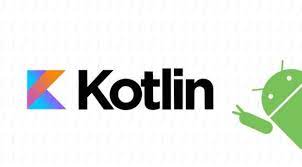Kotlin Programming Language
- The Tech Platform

- Apr 9, 2021
- 4 min read
Kotlin is a statically typed, general-purpose programming language developed by JetBrains, that has built world-class IDEs like IntelliJ IDEA, PhpStorm, Appcode, etc. It was first introduced by JetBrains in 2011 and a new language for the JVM. Kotlin is object-oriented language, and a “better language” than Java, but still be fully interoperable with Java code.
At first glance, Kotlin looks like a more concise and streamlined version of Java. Consider the screenshot above, where I have converted a Java code sample (at left) to Kotlin automatically. Notice that the mindless repetition inherent in instantiating Java variables has gone away. The Java idiom
StringBuilder sb = new StringBuilder();Becomes in Kotlin
val sb = StringBuilder()You can see that functions are defined with the fun keyword, and that semicolons are now optional when newlines are present. The val keyword declares a read-only property or local variable. Similarly, the var keyword declares a mutable property or local variable.
Nevertheless, Kotlin is strongly typed. The val and var keywords can be used only when the type can be inferred. Otherwise you need to declare the type. Type inference seems to be improving with each release of Kotlin.
History:
In July 2011, JetBrains unveiled Project Kotlin, a new language for the JVM, which had been under development for a year. JetBrains lead Dmitry Jemerov said that most languages did not have the features they were looking for, with the exception of Scala. However, he cited the slow compilation time of Scala as a deficiency. One of the stated goals of Kotlin is to compile as quickly as Java. In February 2012, JetBrains open sourced the project under the Apache 2 license.
The name comes from Kotlin Island, near St. Petersburg. Andrey Breslav mentioned that the team decided to name it after an island, just like Java was named after the Indonesian island of Java (though the programming language Java was perhaps named after the coffee).
JetBrains hopes that the new language will drive IntelliJ IDEA sales.
Kotlin v1.0 was released on February 15, 2016. This is considered to be the first officially stable release and JetBrains has committed to long-term backwards compatibility starting with this version.
At Google I/O 2017, Google announced first-class support for Kotlin on Android.
Syntax:
As in C, C++, C#, Java, and Go, the entry point to a Kotlin program is a function named "main", which may be passed an array containing any command-line arguments. This is optional since Kotlin 1.3. Perl, PHP and Unix shell style string interpolation is supported. Type inference is also supported.
// Hello, World! example
fun main()
{
val scope = "World"
println("Hello, $scope!")
}
fun main(args: Array<String>)
{
for (arg in args)
{
println(arg)
}
}Installation:
if you still want to use Kotlin offline in your local system, then you need to execute the following steps to configure your local workspace.
Step 1 − Java 8 installation.
Kotlin runs on JVM, hence. it is really necessary to use JDK 8 for your local Kotlin development. Please refer to the official website of oracle to download and install JDK 8 or an above version. You might have to set the environment variable for JAVA such that it can work properly. To verify your installation in Windows operating system, hit “java –version” in the command prompt and as an output it will show you the java version installed in your system.
Step 2 − IDE installation.
There are a number of IDE available over the internet. You can use any of your choice. You can find the download link of different IDE in the following table.
It is always recommended to use the recent software version to drag out maximum facility from it.
Step 3 − Configuring Eclipse.
Open Eclipse and go to “Eclipse Market Place”. You will find the following screen.
Search for Kotlin in the search box and install the same in your local system. It might take some time depending on the internet speed. You may have to restart your Eclipse, once it is successfully installed.
Step 4 − Kotlin Project.
Once Eclipse is successfully restarted and Kotlin is installed, you will be able to create a Kotlin project on the fly. Go to File → New → Others and select “Kotlin project” from the list.
Features:
Here we have 8 features of Kotlin Programming Languages
Clean, compact syntax.
Single type system (almost)
Null safety.
Functions and functional programming.
Data classes.
Extensions.
Operator overloading.
Top-level objects and the Singleton pattern.
Advantages:
Easy Language − Kotlin is a functional language and very easy to learn. The syntax is pretty much similar to Java, hence it is very easy to remember. Kotlin is more expressive, which makes your code more readable and understandable.
Concise − Kotlin is based on JVM and it is a functional language. Thus, it reduce lots of boiler plate code used in other programming languages.
Runtime and Performance − Better performance and small runtime.
Interoperability − Kotlin is mature enough to build an interoperable application in a less complex manner.
Brand New − Kotlin is a brand new language that gives developers a fresh start. It is not a replacement of Java, though it is developed over JVM. It is accepted as the first official language of android development. Kotlin can be defined as - Kotlin = JAVA + extra updated new features.
Disadvantages:
Namespace declaration − Kotlin allows developers to declare the functions at the top level. However, whenever the same function is declared in many places of your application, then it is hard to understand which function is being called.
No Static Declaration − Kotlin does not have usual static handling modifier like Java, which can cause some problem to the conventional Java developer.
The Tech Platform www.thetechplatform.com









Comments